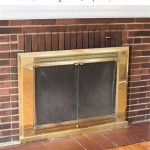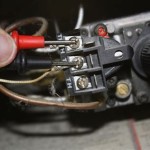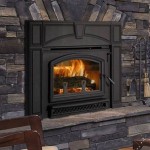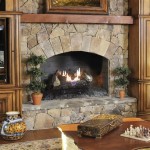Cleaning Glass Fireplace Doors: A Comprehensive Guide
Glass fireplace doors offer aesthetic appeal and functional benefits, protecting the home from sparks and containing heat. However, regular use results in the accumulation of soot, creosote, and ash on the glass, diminishing its clarity and the overall ambiance of the fire. Effective cleaning is essential to maintain the fireplace's appearance and ensure its safe operation. This article provides a comprehensive guide to cleaning glass fireplace doors, detailing various methods and considerations.
The frequency of cleaning depends on how often the fireplace is used and the type of wood burned. Heavy use, especially with wood that generates more soot, necessitates more frequent cleaning. Visual inspection of the glass will quickly reveal the level of buildup and indicate when cleaning is required. Neglecting this maintenance can lead to stubborn stains that are difficult to remove, requiring more aggressive cleaning methods and potentially damaging the glass.
Understanding the Buildup on Fireplace Glass Doors
The residue on fireplace glass doors is primarily composed of soot, creosote, and ash. Soot is a byproduct of incomplete combustion, consisting of fine particles of carbon. Creosote is a flammable, tar-like substance that condenses in the chimney and can also accumulate on the glass surface. Ash is the non-combustible residue left after burning wood. The combination of these elements creates a tenacious layer that obscures the glass and can pose a fire hazard if creosote buildup becomes excessive.
The type of wood burned significantly impacts the amount of residue produced. Softwoods, such as pine and fir, tend to create more soot and creosote than hardwoods like oak and maple. Green or unseasoned wood also produces more smoke and residue because it contains higher moisture levels. Proper wood selection and seasoning are crucial for minimizing buildup on the fireplace glass and within the chimney.
In addition to the type of wood, incomplete combustion due to insufficient airflow can contribute to increased soot and creosote production. Ensuring adequate ventilation and proper damper settings is essential for efficient burning and reducing residue buildup. Regular chimney inspections and professional cleaning are also vital for preventing creosote accumulation within the chimney, minimizing the risk of chimney fires.
Essential Supplies and Safety Precautions
Before commencing the cleaning process, it is crucial to gather the necessary supplies and prioritize safety. Essential supplies include:
- Spray bottle
- Microfiber cloths or paper towels
- Scrub brush or sponge
- Rubber gloves
- Protective eyewear
- Bucket of warm water
- Cleaning solutions (commercial or homemade)
Safety precautions are paramount to avoid injury and damage. Always ensure the fireplace is completely cool before beginning the cleaning process. Hot glass can cause burns. Wear rubber gloves to protect the hands from harsh cleaning agents and soot. Protective eyewear prevents splashes of cleaning solution from entering the eyes. Work in a well-ventilated area to minimize exposure to fumes.
When selecting cleaning solutions, consider the type of buildup and the material of the glass doors. Harsh abrasives can scratch the glass, while certain chemicals can damage the frame or surrounding surfaces. Test any cleaning solution on an inconspicuous area first to ensure it does not cause discoloration or damage. Avoid mixing different cleaning chemicals, as this can produce hazardous fumes.
Cleaning Methods: Commercial Cleaners vs. Homemade Solutions
Several methods can be employed to clean glass fireplace doors, utilizing both commercial cleaners and homemade solutions. Commercial fireplace glass cleaners are readily available and formulated to effectively remove soot and creosote. These cleaners often come in spray bottles and are applied directly to the glass surface. Follow the manufacturer's instructions carefully, allowing the cleaner to dwell for the recommended time before wiping it away with a clean cloth.
Homemade solutions offer a more environmentally friendly and cost-effective alternative. One popular solution involves mixing equal parts water and white vinegar in a spray bottle. Vinegar's acidity helps to dissolve soot and grease. Another effective solution consists of baking soda and water. Create a paste by mixing baking soda with a small amount of water and apply it to the glass. Allow the paste to sit for several minutes before scrubbing and rinsing it off.
Dish soap can also be used in a warm water solution. Although less effective on heavy buildup, it can be suitable for light cleaning. Another more abrasive homemade remedy involves using wood ash itself. Dampen a cloth and dip it into the fireplace ash, then use the cloth to scrub the glass. The fine particles of ash act as a mild abrasive, helping to remove stubborn stains. After scrubbing, rinse the glass thoroughly with clean water and dry it with a microfiber cloth. Regardless of the method chosen, it is crucial to rinse the glass completely to remove any residual cleaning solution.
Stubborn stains may require multiple applications of the chosen cleaning solution. Employing a razor blade scraper, handled with extreme care, can also assist in removing particularly persistent buildup, but only if the glass surface is appropriate for this method (tempered glass is generally suitable). Always hold the blade at a shallow angle and avoid applying excessive pressure to prevent scratching the glass.
After cleaning, consider applying a glass cleaner to further enhance the clarity and shine of the fireplace doors. This step can also help to repel dust and soot, prolonging the time between cleanings.
Detailed Step-by-Step Cleaning Procedure
Following a structured procedure ensures efficient and effective cleaning of glass fireplace doors. The following steps outline a general cleaning process:
- Ensure the fireplace is completely cool.
- Protect the surrounding area with drop cloths or newspapers to prevent staining.
- Gather all necessary supplies and cleaning solutions.
- Put on rubber gloves and protective eyewear.
- Remove any loose ash or debris from the fireplace opening.
- Apply the chosen cleaning solution to the glass doors, covering the entire surface.
- Allow the solution to dwell for the recommended time, typically several minutes.
- Scrub the glass with a soft brush or sponge, focusing on areas with heavy buildup.
- For stubborn stains, reapply the cleaning solution and scrub again.
- Rinse the glass thoroughly with clean water, removing all traces of the cleaning solution.
- Dry the glass with a clean microfiber cloth or paper towels.
- Inspect the glass for any remaining stains and repeat the cleaning process if necessary.
- Clean the fireplace frame with a damp cloth and mild soap if needed.
- Remove the drop cloths or newspapers and dispose of them properly.
For heavily soiled glass, consider presoaking the doors with a solution of warm water and dish soap before applying the primary cleaning agent. This can help to loosen the buildup and make it easier to remove. When rinsing the glass, use a spray bottle or a sponge to apply clean water, ensuring all cleaning solution residue is removed.
After drying the glass, inspect it closely for streaks or water spots. If any are present, dampen a clean microfiber cloth with water and wipe the glass again. Dry the glass immediately with another clean cloth to prevent new streaks from forming.
Preventive Measures and Maintenance Tips
Prevention is key to minimizing the frequency and intensity of cleaning glass fireplace doors. Several measures can be implemented to reduce soot and creosote buildup:
- Burn seasoned hardwood instead of softwood.
- Ensure proper airflow and ventilation in the fireplace.
- Maintain regular chimney inspections and professional cleaning.
- Avoid burning excessive amounts of paper or trash in the fireplace.
- Clean the glass doors regularly, even if only lightly soiled, to prevent buildup from hardening.
Proper wood seasoning involves allowing freshly cut wood to dry for at least six months, ideally a year. This reduces the moisture content of the wood, resulting in cleaner burning and less smoke. Store wood in a dry, well-ventilated area, elevated off the ground to prevent moisture absorption.
Regular chimney inspections are crucial for identifying and addressing potential hazards, such as creosote buildup and structural damage. A qualified chimney sweep can safely remove creosote and other debris from the chimney, reducing the risk of chimney fires. Regular cleaning also ensures proper airflow and ventilation.
By adopting these preventive measures and adhering to a regular cleaning schedule, it is possible to maintain the clarity and appearance of glass fireplace doors, ensuring a safe and enjoyable fireplace experience.

How To Clean Fireplace Glass Doors For Crystal Clear

How To Remove And Clean Glass Fireplace Doors

How To Clean Fireplace Glass Doors Vertical Chimney Care

How To Clean The Glass On Your Gas Fireplace

How To Clean Fireplace Glass Doors Vertical Chimney Care

How To Clean Gas Fireplace Glass

How To Clean Fireplace Glass Doors Molly Maid

How To Clean Fireplace Glass Doors Fast Easily

How To Clean Fireplace Glass Door The Right Way Vitcas

How To Clean Fireplace Glass Doors For Crystal Clear








